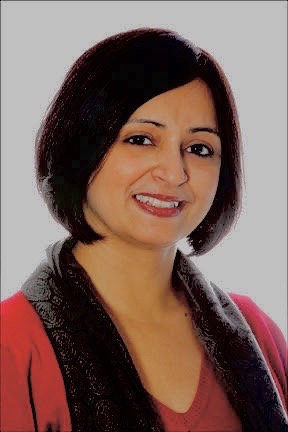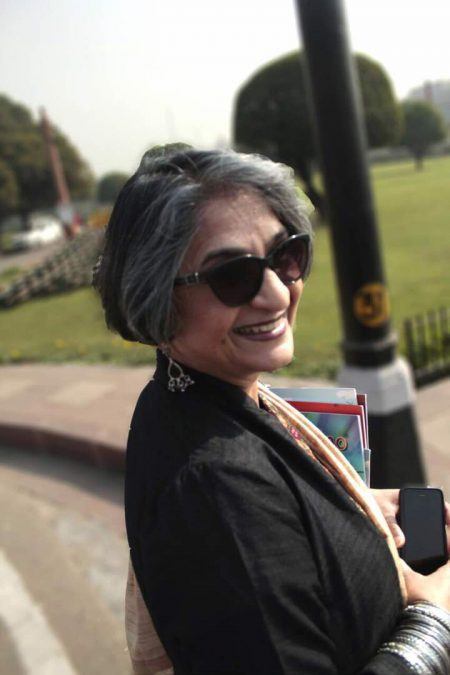Just off the field – Sharda Ugra
 Sharda Ugra, a sports journalist for over 25 years, is senior editor with ESPNcricinfo, the world’s biggest independent single-sport website and ESPN.in, ESPN’s new multisport website which focuses on sports Indians’ play, watch and follow. She contributes to academic and popular publications and websites around the world, has won awards for sports writing and worked with former New Zealand cricket captain John Wright and Indian cricketer Yuvraj Singh on their memoirs. She was a fellow of the Australia India Institute, University of Melbourne in 2013.”
Sharda Ugra, a sports journalist for over 25 years, is senior editor with ESPNcricinfo, the world’s biggest independent single-sport website and ESPN.in, ESPN’s new multisport website which focuses on sports Indians’ play, watch and follow. She contributes to academic and popular publications and websites around the world, has won awards for sports writing and worked with former New Zealand cricket captain John Wright and Indian cricketer Yuvraj Singh on their memoirs. She was a fellow of the Australia India Institute, University of Melbourne in 2013.”
This article written by her, first appeared in Indian Women’s Press Coprs Magazine in 2007.
There isn’t a story of blatant sexism to tell, it is more about days spent trying to become invisible and dealing with mortifying awkwardness.
In the early 1990s, as Chitra Subramaniam was busting Bofors, Harinder Baweja eyeballing militants and Sucheta Dalal hunting down Dalal Street bulls, a few of us, disconnected twentysomething females, were attempting to do something of far less import but which, to us, was life-defining. We were trying to cut it as “women” sports reporters, planet journalism’s previously unknown mutant species.
Women worked beats in politics, business, science, and development, they had fought to be let in on the night shifts. But the sports pages were still all-male terrain. After all, sport was played mostly by men (so what if the country’s best track athletes happened to be female?) and so, it was assumed, appreciated and watched only by men too. Marie Curie may have discovered radioactivity, but the female brain was not made to grasp the
aerodynamics of the cricket ball. Sport was guyspace.
But what about me?? Eleven when the impossibly glamourous Pakistan cricket team toured India after almost two decades, thirteen when Paolo Rossi took Italy to the football World Cup and 14 when India beat the West Indies at Lords, sport took over my life early, along with books and words. None of them have let go. Through a series of events that I now think irrefutably prove the existence of God, I found my foot in the door at Mid-Day, Bombay. The editor was willing to take a chance and the staff had a good mix of the world weariness and energy, recklessness and wisdom. The office became home, but it was the outside world where you had to fit in despite sticking out.
Along with early learnings on the job, came the Mission: to prove that you were a ‘serious’ journalist – aka not a groupie – to conduct yourself “professionally” at all times, to become invisible. Quiet clothes, sturdy shoes, sensible questions, don’t let the team down (without stopping to ask who this ‘team’ exactly was). Maybe I took it too much to heart but there was nothing else to go by.
If the athletes were curious, they were too polite to ask. If they were taken aback, they didn’t show it. In sports other than cricket, all reporters were welcome. The men in white came in all sorts: some whose legends did them no justice, others whose legends served them better than they deserved. It was okay to be patronised as long as you got the information. Dealing with women athletes was the bonus: covering women’s tennis tournaments, part of my second job with the Hindu, was like being on the road with friends. “I played such shit today,” they’d say flinging down their rackets, and you could quote them.
The men already in the press box took more getting used to: some were friendly and perfectly civil and I remember each of them. Others maintained hostile silence for years, ignored you deliberately and I remember them too. When the next newcomer arrived and they behaved exactly the same, I realised it wasn’t me, it was them. Us freshers banded together until some older reporters figured we weren’t going to go away. Sport’s invisible people – scorers, umpires, line judges, coaches, officials – somehow seemed to know how to deal with the new species most naturally. In Indore once, an official asked a first-class cricket team to leave their dressing room so I could use the only toilet at the ground and they did.
It took six years to ask a question at a press conference for fear of being thought of as a stupid woman who didn’t know sport. Liberation came at Wimbledon when an English reporter asked Boris Becker, “Boris, why do you spit so much?” – and nobody took away his press pass. It was perhaps a more innocent time. There were few agents, there were no PR companies, there was no 24/7 breaking news television. It was possible to locate Sachin Tendulkar’s home number by looking for his father’s name in the telephone directory. By the time I quit Mid-Day, the sports department had a green telephone directory full of numbers and had had expanded to include two gifted and smart rookies – Hemal Ashar and Prajwal Hegde – who also happened to be women.
Sure, there was unpleasantness but it came from places that were easy to ignore. One ex-India cricket captain asked a flummoxed young photographer why Mid-Day’s desk had mostly female reporters and photographers. “Is it for easy access?” he said. Not that you’d understand, bozo, but nice to know what you think of your buddies. An article in an obscure magazine written by an author who called himself “Anonymous” sought to bust this “myth” of women sports reporters. We were hired, he said, for our “novelty value”, most of us wrote ‘soft features’ or weren’t serious beat reporters and often rode on the back of our ability to, (what a horror) ‘write’, as opposed to the ability to bare cricketers’ technical flaws (er… to preach?). To the journalist of the early 1990s, it would have caused tearful distress. Just into my thirties, I sniggered. The author didn’t even have a name, how could he have an argument?
Who knows what Anonymous is up to now, but a couple of us from that time are still around: in Calcutta, Elora Sen of the Statesman became the first female sports editor of a major national newspaper. I know she would just like to be known as the best damn sports editor there ever lived. A few years later after we started, we were joined by younger women, bylines popping up in national papers, a gentle trickle into newsrooms and press boxes.
When television arrived, so did the deluge. The new girls were a younger, brassier generation, who thought nothing of hammering on the Australian cricket team bus in the hope that one of the players would open a window and deliver a bite into their mike. There is not a single sports event now where you will not see women journalists in
either print or TV; the influx into print is far smaller, but it is has not stopped. Some come and go, others stay but we are no longer oddities. The experience of each of the women will be different not just to mine but to a male colleague’s. We stand together chatting at games, and if a guy walks past grumbling good-naturedly about “all this female bonding”, we laugh in response. I read about how American women sports reporters must fight their way through hostile locker rooms and realise that being snubbed, ignored or patronized is not so bad.
It’s not you, remember, it’s them.
By Sharda Ugra


